Business Introduction Letter Samples
-

Photography Business Introduction Letter
download now -

Plumbing Business Introduction Letter
download now -

Catering Business Introduction Letter
download now -

Business Introduction Letter for Visa Application
download now -
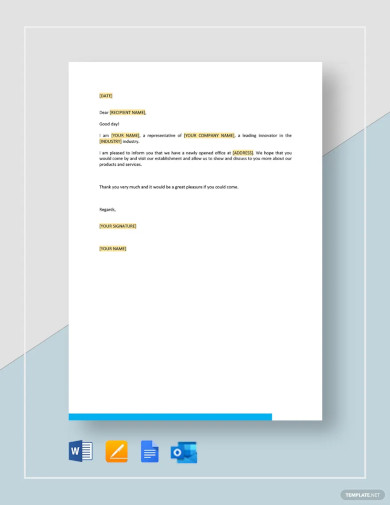
Business Introduction Letter Template
download now -

Business Introduction Letter Sample Template
download now -

Business Introduction Letter to New Clients Template
download now -

New Business Introduction Letter Template
download now -
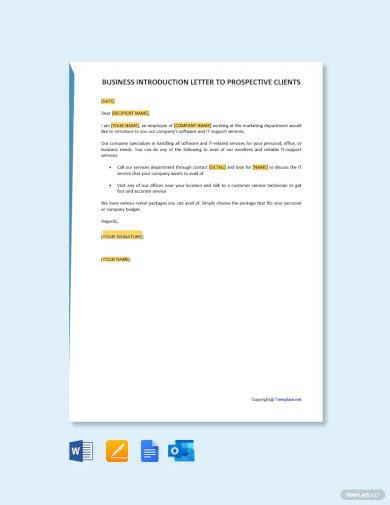
Business Introduction Letter to Prospective Clients Template
download now -

Trading Business Introduction Letter Template
download now -

Standard Business Introduction Letter Template
download now -

Free Cleaning Business Introduction Letter Template
download now -

Company Introduction Letter for New Business Template
download now -

Sample Business Introduction Letter
download now -
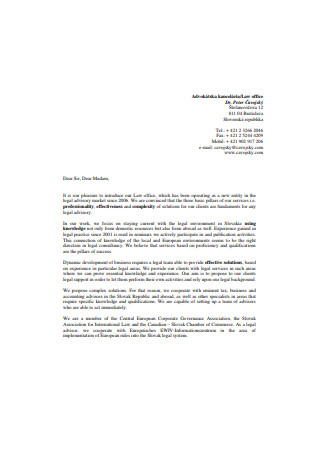
Formal Law Office Business Introduction Letter
download now -

Corporate Professional Company Business Introduction Letter
download now -

Business relationship Company Introduction Letter
download now -

Business Client Introduction Cover Letter
download now -

Letter of Introduction for Business Design
download now -

Basic Business Prospective Client Introduction Letter
download now -

Business Introduction Letter for Self Employees
download now -

Business Introduction Proposal Letter
download now -
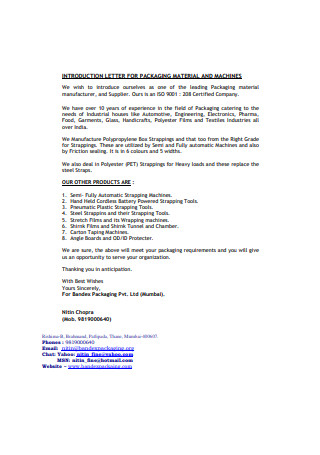
Engineering Business Introduction Letter
download now -

Hotel Introductory Business Introduction Letter
download now -

Software Business Creative Introduction Letter
download now -

Generic Business Introduction Letter
download now -

Industrial Supplier Business Introduction Letter
download now -

Electrical Business Introduction Letter
download now -

Potential Client Business Introduction Letter
download now -

Manufacturing Trading Business Introduction Letter
download now -

Construction Company Profile Business Introduction Letter
download now -

Business Introductory Paragraph Letter Sample
download now -

Marketing Business Introduction Covering Letter
download now -

Construction Business Writing Introduction Letter
download now -

Food Business Introduction Letter
download now -
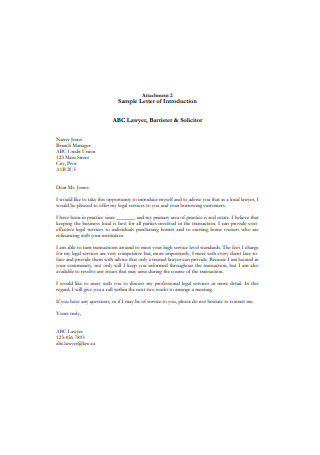
Legal Business Introduction Letter
download now -

Contractor Business Introduction Letter
download now -

Sample Letter of Introduction for Business
download now -

Partnership Business Introduction Letter
download now -

Employee Business Introduction Letter
download now -

Product Business Introduction Letter
download now -

Official Business Introduction Letter
download now -

Email Business Introduction Letter
download now -

Education Business Introduction Letter
download now -

New Service Coordinator Business Introduction Letter
download now -
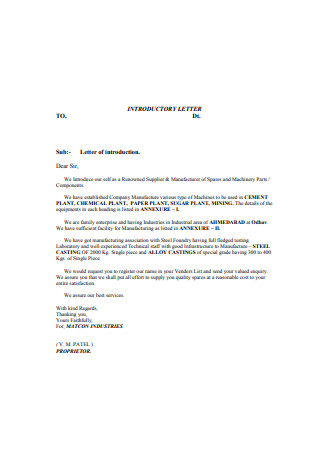
Manufacturer Business Introduction Letter
download now -

Business Introduction Letter in DOC
download now -

Sample Letter of Introduction for New Business
download now
FREE Business Introduction Letter s to Download
Business Introduction Letter Format
Business Introduction Letter Samples
What is a Business Introduction Letter?
The Elements of a Business Introduction Letter
How to Write a Business Introduction Letter
FAQS
How do I make my Business Introduction Letter stand out?
What should I avoid when writing a Business Introduction Letter?
How do I address the recipient in a Business Introduction Letter?
Should I attach any documents to a Business Introduction Letter?
When should I send a Business Introduction Letter?

Download Employee Training Agreement Bundle
Business Introduction Letter Format
[Your Company Name]
[Your Address]
[City, State, ZIP Code]
[Email Address]
[Phone Number]
[Date]
Recipient’s Name
[Recipient’s Title]
[Recipient’s Company Name]
[Recipient’s Address]
[City, State, ZIP Code]
Subject: Business Introduction – [Your Company Name]
Dear [Recipient’s Name],
I hope this message finds you well. My name is [Your Name], and I am [your position/title] at [Your Company Name], a company dedicated to [mention core business or area of expertise, e.g., “providing innovative software solutions for small and medium-sized enterprises”].
We are excited to introduce our company to you as we believe there is significant potential for a mutually beneficial relationship. Our mission is to [mention your company’s mission, goals, or unique selling point, e.g., “empower businesses with cutting-edge tools to streamline operations and enhance productivity”].
Who We Are
At [Your Company Name], we specialize in [mention services, products, or solutions you offer]. Our team of [mention team size, expertise, or unique qualities] is dedicated to delivering exceptional value to our clients by [mention key value proposition, e.g., “leveraging the latest advancements in artificial intelligence to drive business growth”].
Our Offerings
We offer a range of services that include:
- [Service/Product 1] – [Brief description]
- [Service/Product 2] – [Brief description]
- [Service/Product 3] – [Brief description]
These services are designed to [mention benefits to the recipient, e.g., “increase operational efficiency, reduce costs, and enhance customer experience”].
Why Partner with Us?
Our experience in [mention relevant industry, e.g., “retail technology”] allows us to understand the unique challenges faced by businesses like yours. Our past successes include working with [mention successful collaborations, clients, or case studies]. We are confident we can bring the same level of excellence to your organization.
We would love the opportunity to discuss how [Your Company Name] can support your business goals. We are happy to arrange a meeting at a time convenient for you. Please feel free to contact us at [Your Phone Number] or [Your Email].
Thank you for considering this opportunity for collaboration. We look forward to the possibility of working together and achieving great things.
Best regards,
[Your Full Name]
[Your Title/Position]
[Your Company Name]
[Phone Number]
[Email Address]
[Company Website (if applicable)]
What is a Business Introduction Letter?
A Business Introduction Letter is a professional document used to formally introduce a business, its products, services, or intentions to potential clients, partners, or stakeholders. It aims to establish credibility, create connections, and foster business relationships. You can also see more on Company Introduction Letter.
The Elements of a Business Introduction Letter

Wherever you may decide to look, there is no escaping the fact that business letters like an introduction letter are going to come with various basic elements. Without these elements, there just won’t be enough material to make these documents effective in any shape or form. Those who are new to the topic of business introduction letters may want to take a closer look at the basic elements. Without further ado, look into this shortlist, which contains a brief but detailed description for each element.
How to Write a Business Introduction Letter

Business owners who need to reach out to others for any kind of reason won’t be satisfied to just learn about the elements. Finding the right method to create a business introduction letter is crucial for this kind of task. Although there are always templates around that one can readily make use of, there is much to be desired concerning the actual step-by-step process. Those who want to start from scratch can rely on the following instructions, which will guarantee an easy, hassle-free experience.
Step 1: Start with a Formal Header
Begin by including your company’s letterhead, logo, name, and contact information. Add the date of the letter and the recipient’s details (name, title, and company name). Ensure professionalism in this section. You can also see more on Business Proposal Letters.
Step 2: Write a Warm Introduction
Start with a respectful greeting and introduce the purpose of the letter. Highlight the reason for reaching out, such as presenting a new product or establishing a partnership. This section must hook the reader’s attention.
Step 3: Provide Key Business Information
In this step, offer key details about your company, such as its history, mission, and core services. If the letter is about a product or service, provide a brief overview of its benefits and unique features. You can also see more on Letter of Interest.
Step 4: Highlight the Value Proposition
Showcase what sets your company, product, or service apart from competitors. Explain how the recipient will benefit from this collaboration or introduction. This is your opportunity to “sell” your business.
Step 5: Close with a Call-to-Action
End the letter with a clear call-to-action (CTA) such as requesting a meeting, inviting them to visit your website, or encouraging a reply. Offer your availability for follow-ups and provide your contact details. Conclude with a formal closing remark like “Sincerely” or “Best Regards,” followed by your name, title, and signature.
A Business Introduction Letter is a document for establishing initial contact with potential clients or partners. It builds trust, communicates value, and fosters long-term relationships. Crafting a clear, professional introduction letter can significantly impact business growth and open the door to future opportunities and collaborations. You can also see more on Letter of Interest.
FAQS
How do I make my Business Introduction Letter stand out?
To make your letter stand out, personalize it for the recipient. Address them by name, mention their company, and clearly explain how your services or products benefit them. Use a professional tone, compelling language, and include a strong call-to-action (CTA). Highlight your unique value proposition and offer a reason for the recipient to follow up with you.
What should I avoid when writing a Business Introduction Letter?
Avoid being too lengthy or overly technical. Stick to clear, concise language and avoid industry jargon that may confuse the recipient. Do not overuse sales pitches or make unsupported claims. Always proofread your letter to avoid spelling and grammatical errors. You can also see more on Request Letter.
How do I address the recipient in a Business Introduction Letter?
Address the recipient by their name and title (e.g., “Dear Mr. Johnson” or “Dear Ms. Smith”). If you don’t know the name, use “Dear [Job Title]” (e.g., “Dear Marketing Manager”) to maintain professionalism. Avoid generic salutations like “To whom it may concern.”
Should I attach any documents to a Business Introduction Letter?
Yes, if necessary. Attachments may include product catalogs, brochures, service guides, or company portfolios. Ensure that you reference these attachments in the letter, so the recipient knows to review them. For email letters, clearly label the attachments to avoid confusion. You can also see more on Company Profile.
When should I send a Business Introduction Letter?
Send a Business Introduction Letter when entering a new market, launching a new product, starting a business partnership, or introducing your company to prospective clients or stakeholders.
